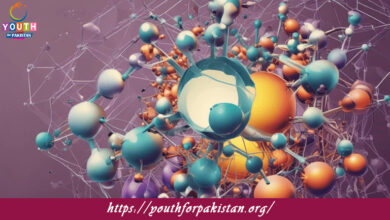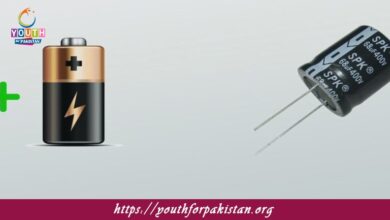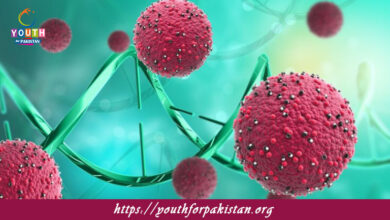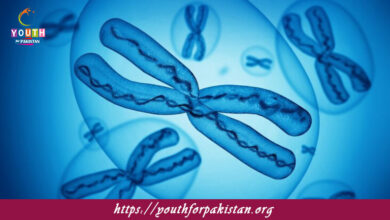Bioenergetics MDCAT MCQs with Answers
Welcome to the Bioenergetics MDCAT MCQs with Answers. In this post, we have shared Bioenergetics Multiple Choice Questions and Answers for PMC MDCAT 2024. Each question in MDCAT Biology offers a chance to enhance your knowledge regarding Bioenergetics MCQs in this MDCAT Online Test.
What is the primary source of energy for cellular processes?
a) Carbohydrates
b) Lipids
c) ATP
d) Proteins
Which process is responsible for the production of ATP in the mitochondria?
a) Glycolysis
b) Citric acid cycle
c) Electron transport chain
d) Fermentation
In which part of the cell does the citric acid cycle occur?
a) Cytoplasm
b) Nucleus
c) Mitochondrial matrix
d) Endoplasmic reticulum
What is the primary role of NADH and FADH2 in cellular respiration?
a) To provide electrons to the electron transport chain
b) To directly produce ATP
c) To synthesize glucose
d) To convert pyruvate to lactic acid
Which process produces the most ATP per molecule of glucose?
a) Glycolysis
b) Citric acid cycle
c) Fermentation
d) Oxidative phosphorylation
What is the main product of glycolysis?
a) ATP
b) NADH
c) Pyruvate
d) Acetyl-CoA
How many ATP molecules are produced through oxidative phosphorylation per glucose molecule?
a) 2
b) 4
c) 32
d) 38
Which molecule is an end product of the citric acid cycle?
a) Glucose
b) Pyruvate
c) Acetyl-CoA
d) Carbon dioxide
Which part of the mitochondria is involved in ATP synthesis?
a) Outer membrane
b) Inner membrane
c) Matrix
d) Intermembrane space
Which molecule is generated during the breakdown of fatty acids in beta-oxidation?
a) Glucose
b) Pyruvate
c) Acetyl-CoA
d) Lactic acid
What is the role of oxygen in cellular respiration?
a) To produce glucose
b) To act as the final electron acceptor in the electron transport chain
c) To convert ATP to ADP
d) To break down fatty acids
In which process is glucose converted to lactate?
a) Glycolysis
b) Lactic acid fermentation
c) Citric acid cycle
d) Electron transport chain
How many ATP molecules are produced during glycolysis?
a) 2
b) 4
c) 6
d) 8
Which of the following is a product of the citric acid cycle?
a) ATP
b) NADH
c) FADH2
d) All of the above
Where does the conversion of pyruvate to acetyl-CoA occur?
a) Cytoplasm
b) Mitochondrial matrix
c) Inner mitochondrial membrane
d) Endoplasmic reticulum
Which of the following processes generates ATP directly through substrate-level phosphorylation?
a) Glycolysis
b) Citric acid cycle
c) Electron transport chain
d) Oxidative phosphorylation
Which component of the electron transport chain is responsible for pumping protons across the mitochondrial membrane?
a) Ubiquinone
b) Cytochrome c
c) ATP synthase
d) Complex I, III, and IV
What is the net gain of ATP from one molecule of glucose through aerobic respiration?
a) 2
b) 4
c) 32
d) 38
Which process occurs in the mitochondria but does not require oxygen?
a) Citric acid cycle
b) Glycolysis
c) Fermentation
d) Beta-oxidation
Which process involves the production of ethanol and carbon dioxide as byproducts?
a) Lactic acid fermentation
b) Alcoholic fermentation
c) Citric acid cycle
d) Glycolysis
What is the role of ATP synthase in cellular respiration?
a) To generate ATP from ADP and inorganic phosphate
b) To transfer electrons to oxygen
c) To convert pyruvate into acetyl-CoA
d) To produce NADH from NAD+
Which of the following statements about the electron transport chain is true?
a) It occurs in the cytoplasm
b) It generates ATP through substrate-level phosphorylation
c) It is the final stage of aerobic respiration
d) It directly produces glucose
What happens to the electrons after they are transferred to oxygen in the electron transport chain?
a) They form ATP
b) They are used to create a proton gradient
c) They are converted into carbon dioxide
d) They combine with oxygen to form water
In which part of cellular respiration is carbon dioxide produced?
a) Glycolysis
b) Citric acid cycle
c) Electron transport chain
d) Fermentation
Which process is most efficient in terms of ATP production?
a) Glycolysis
b) Lactic acid fermentation
c) Aerobic respiration
d) Alcoholic fermentation
What is the role of coenzyme A in cellular respiration?
a) To carry electrons to the electron transport chain
b) To transfer acetyl groups into the citric acid cycle
c) To regenerate NAD+
d) To produce ATP directly
Which molecule is produced during beta-oxidation of fatty acids?
a) Pyruvate
b) Acetyl-CoA
c) Lactic acid
d) Glucose
What is the primary function of glycolysis?
a) To produce ATP and pyruvate
b) To regenerate NAD+
c) To convert glucose to acetyl-CoA
d) To create a proton gradient
Which process is the main contributor to ATP production during oxidative phosphorylation?
a) Glycolysis
b) Citric acid cycle
c) Electron transport chain
d) Lactic acid fermentation
Where does the conversion of pyruvate to acetyl-CoA take place?
a) Cytoplasm
b) Mitochondrial matrix
c) Inner mitochondrial membrane
d) Endoplasmic reticulum
Which metabolic pathway directly produces ATP?
a) Citric acid cycle
b) Glycolysis
c) Electron transport chain
d) Beta-oxidation
Which of the following molecules serves as a major carrier of high-energy electrons?
a) ATP
b) NADH
c) FADH2
d) Both b and c
In which phase of cellular respiration is oxygen used?
a) Glycolysis
b) Citric acid cycle
c) Electron transport chain
d) Fermentation
What is the net production of ATP from one molecule of glucose in glycolysis?
a) 2
b) 4
c) 6
d) 8
Which process generates ATP through chemiosmosis?
a) Glycolysis
b) Citric acid cycle
c) Oxidative phosphorylation
d) Lactic acid fermentation
Which molecule acts as an electron carrier in the citric acid cycle?
a) ATP
b) NADH
c) FADH2
d) Both b and c
What is the final electron acceptor in the electron transport chain?
a) NAD+
b) Oxygen
c) FAD
d) Water
Which of the following processes is not part of aerobic respiration?
a) Glycolysis
b) Citric acid cycle
c) Electron transport chain
d) Lactic acid fermentation
What is produced as a byproduct of the citric acid cycle?
a) Oxygen
b) Glucose
c) Carbon dioxide
d) Lactic acid
Which process occurs in the mitochondria but does not involve oxygen?
a) Glycolysis
b) Citric acid cycle
c) Electron transport chain
d) Beta-oxidation
Which of the following is a direct product of glycolysis?
a) ATP
b) Pyruvate
c) NADH
d) All of the above
If you are interested to enhance your knowledge regarding Physics, Chemistry, Computer, and Biology please click on the link of each category, you will be redirected to dedicated website for each category.





